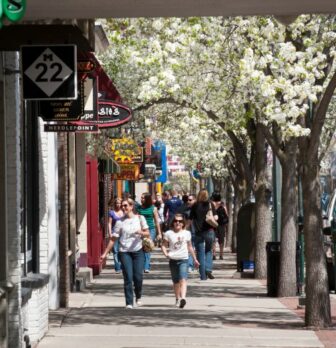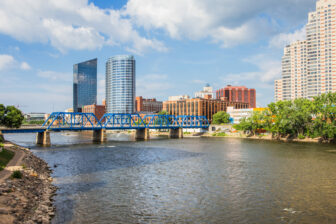Years ago I heard a presentation by folks who were involved in the development of the Portland Oregon streetcar system. They described it as development-oriented transit, not transit-oriented development. They wanted to emphasize that the main purpose was central city economic development, not moving people. (You can check out the staggering magnitude of new development in Portland along the street car route here.)
As we have explored before (here and here), across the country––in red and blue states alike–-metropolitan areas have made rail transit a centerpiece of their economic development strategy. Primarily to retain and attract young talent but also to stimulate and steer development. In nearly all of these metros the business community has led the campaign for light rail and the tax increase required to develop and operate the systems.
So it shouldn’t be a surprise when Crain’s Detroit Business reported more than one billion dollars––yes billion with a B––in new development along the little more than three mile QLine––the downtown to midtown Detroit streetcar system that will open in 2017. The story is entitled Investors queue up for QLine: Real estate deals show economic clout of mass transit project. Worth checking out!
The Crain’s article quotes Robert Gibbs, managing principal of Birmingham-based Gibbs Planning Group Inc.:
“A lot of developers in cities nationwide built these transportation lines really as a real estate development tool.” … Gibbs expects the rail will be extended north, perhaps as far as Royal Oak, in about 25 years. “Skeptics still think this will be just like the People Mover, but once this is operating and you can’t get a seat and property values become hyper-inflated, there will be pressure to extend it,” Gibbs said.
Lets hope this doesn’t take 25 years. And that Woodward light rail goes at least to Birmingham, not end in Royal Oak.
The lesson I have learned is that buses–-including bus rapid transit (BRT)–-is primarily for moving people. But what drives and steers development is rail transit. BRT is not development-oriented transit. So leading edge regions are doing both. On the metro Detroit corridors––Woodward for sure, maybe others–– where there is demand for the kind high-density, high-amenity, not-car-dependent neighborhoods that particularly young talent is demanding the most powerful lever to create those neighborhoods is rail transit both in Detroit and the suburbs.






